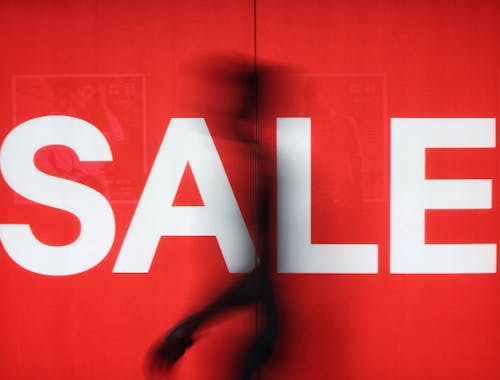Black Friday Supply Chain and Inventory Planning for 2022

Black Friday seems like a long time away for most of the calendar year…until it isn’t.
In the world of inventory planning and supply chains, it’s barely the blink of an eye. Many retail operations (brick-and-mortar and e-commerce alike) start diving deeper into Black Friday inventory planning in April.
In 2021, an estimated $30 to $40 billion in sales occurred on Black Friday, $8.9 billion of which involved online sales. In the U.S. alone, 155 million people shopped either in-person or online on Black Friday, with the average shopper spending $430. Nearly 13% of all retail sales in the U.S. occur between Black Friday and Christmas.
Black Friday (and the accompanying Cyber Monday) are the Super Bowl for eCommerce. Holiday sales supply chain and inventory planning is akin to the thankless workhorse that makes sure the whole operation goes smoothly.
It’s not flashy, but without it, each sale made on Black Friday can become an unsatisfied customer, negative review, and chargeback.
Consumers have grown to expect deals during the “Cyber 5” – the five days between Thanksgiving and Cyber Monday – and try to hold back on much of their holiday shopping until then. More than half of holiday shoppers (54% to 57%) shop online or in stores on either Black Friday, the weekend after, or Cyber Monday.
“Selling out” may seem like a badge of honor, but for retailers, being out of stock it means leaving potential heaps of money on the table. If you’ve spent all this money and taken on all the mental bandwidth to acquire customers, you may as well have the systems in place to close those “extra” sales.
Successful Black Friday inventory planning and management mean you have sufficient stock to meet customer demand. Inventory planning has always been among the most challenging aspects of running any retail business, but even moreso an e-commerce business.
Forecasting demand for your products and knowing the most advantageous time to place inventory orders are tasks not easily achieved. Further, each year brings about new challenges – for instance, we’ve yet to see how Black Friday shoppers react to inflationary pressure.
The following article explores the ins and outs of Black Friday supply chain and inventory planning for 2022 and beyond.
The “Perfect Storm”
Black Friday supply chains have endured a “perfect storm” over the last two to three years. Many factories worldwide either partially shut down or closed altogether due to pandemic restrictions.
Ports around the world closed or at least slowed down.
Between lockdowns and store closures, people turned in droves to online shopping well before Black Friday, dramatically increasing the demand for shipping and imported goods. There simply wasn’t enough capacity in either ships or ports to handle the sudden increase given the current situation, nor was there enough inventory in warehouses to fill the orders, thanks to the curtailment in manufacturing.
With shipping demand exceeding supply, freight also became more expensive. Small and medium-sized e-commerce businesses found themselves getting priced out of the running by more prominent, established brands paying whatever it took to get as much of their goods on boats and through ports as possible.
For example, a 40-foot container shipment from China to the U.S. cost less than $2,000 in November 2019. By June 2020, the cost had risen to $2,500 and had skyrocketed to about $20,000 by September 2021. It’s fallen significantly since then but was still $9,500 in June 2022.
In other words, no matter how you get your Black Friday inventory, it’ll likely cost significantly more than it did two years ago and probably arrive more slowly – so plan accordingly.
How Do Successful Companies Supply Chain for Black Friday? Start Smart, Start Early
The only way to work around inventory management and supply chain problems this year is to start Black Friday planning well ahead of routine and order early.
Many retailers are switching up their manufacturing and fulfillment facilities. If you’re one of them, be sure to do a quality test to evaluate your product before shipping out potentially thousands of them.
In the past, most retail businesses, particularly small businesses, ordered in late summer (typically August) for Black Friday/Cyber Monday inventory needs. In 2022, many retailers began ordering in April, especially those who sell online.
If you haven’t started ordering your holiday inventory yet, get going today on your Black Friday inventory management. Not next week, or even tomorrow. Today.
Be Prepared for an Earlier Sales Rush
Customers see and hear the same news stories that you do, which means they may have concerns about supply chains, too.
In October 2021, online shopping increased by 325% compared to 2020 because many consumers addressed concerns about being able to get the gifts they wanted by doing their holiday shopping earlier than Black Friday.
According to the National Retail Federation, 49% of shoppers surveyed in October 2021 planned to begin holiday shopping before November. Not only was that a 42% increase over 2020, but it was also the highest rate ever encountered in the NRF’s annual holiday shopping survey. In the same survey, 47% admitted being concerned they would have problems finding the gifts they wanted, and 36% said they would be shopping early to avoid missing out on important items.
These findings are backed up by Intuiti’s 2021 Holiday Consumer Spending Trends survey, which found that 57% of consumers planned to start shopping on or before Thanksgiving, with about 25% planning to start on Black Friday. The number of people saying they would wait until December to start shopping was only 15%, nearly half the annual average.
Increase Supply Chain Visibility
Inventory arriving a week late isn’t necessarily a crisis – the issue is not knowing it was going to be late. Without knowing when your Black Friday inventory will come, you can’t make the stock management adjustments that areun needed to ensure you don’t run out while waiting.
To know for sure when inventory orders will arrive, you need to increase your Black Friday supply chain visibility – from the factories making the products on down to the trucks traveling those last miles to your warehouse.
Knowing exactly where your orders are at each step along the way may require some combination of personal visits (if possible), supply chain tracking software, logistics company intervention, and more.
Setting up this visibility apparatus may involve a significant investment. Your investment in visibility is likely to be less, however, than the losses you would incur from running out of inventory on high-demand products and providing an unsatisfactory customer experience.
Use Multiple Freight Options
Historically, e-commerce or brick-and-mortar retailers have used air freight only in exceptional circumstances – for example, when they must have the inventory right away, or in situations where shipping cost is less of a factor because the products are lightweight and high-margin.
However, this year some retailers are planning to use air freight to obtain a significant portion of their inventory. This lets them fulfill orders in the short term and keep customers happy while waiting on the remainder of their stock to arrive by sea.
Providing a good customer experience is critical to repeat sales. Although margins will suffer, judicious use of air freight can help you avoid having to take backorders or otherwise leave customers hanging.
Consider External Financing
Since inventory has to be paid for upfront, many retailers find most of their capital tied up in inventory. The typical e-commerce business encounters 30/70 terms, paying 30% down to manufacturers at the time of order, with the balance of 70% due when shipped.
This usually creates cash-flow challenges even in “normal” circumstances. With the need this year to place larger orders or undertake costly freight upgrades to ensure enough inventory arrives in time, those challenges have multiplied.
External funding options are one solution to the problem. Companies that don’t want to sell equity or put a lien on their assets are increasingly looking at revenue-based financing.
With revenue-based financing, the loan you receive to cover inventory purchases is paid back through a percentage of daily sales. Your risk is lower because the repayment rate is based on the revenue you’re bringing in. You’ll pay back more in good months than in slower months.
Clear.co understands the needs of retail businesses, particularly e-commerce businesses. We have created funding solutions to help you stay on top of inventory management needs for Black Friday and year-round. You may qualify for up to $20 million in 24 hours without giving up any equity. Contact us to learn more.
Take Care of Employees
You likely already know this, but it bears repeating – take care of your workforce, especially with the challenging labor market this year.
There’s no worse time to lose employees than during the holiday shopping season, which is already an inherently high-risk period for turnover thanks to the long hours and stressful pace.
If you’re a solo operation – take care of yourself! Do “future you” a favor by planning ahead and minimizing the potential for supply chain and inventory frustrations.
Final Thoughts: Thank Yourself for Thinking Ahead
The key to preventing Black Friday inventory problems lies in lots of planning and sound inventory management.
Think of your contingency plans ahead of time – if Option A, Option B, and Option C all fail, what’s next?
Some of the tips we've discussed, such as using air freight, can substantially impact your bottom line, but they may come up as unexpected costs. You have to weigh the costs against the impact that running out of stock could have on your business in terms of lost sales and customer experience.
Most importantly, make it OK to not be perfect.
List your unknowns and “I guess we’ll find outs” and leverage each mistake as data collection to continuously improve your Black Friday experience.







